- work •
- statement •
- reviews + essays •
- resume •
- contact
deankessmann
privacy plantings (work-in-progress)
archival pigment prints, various sizes, 2022–ongoing
edition and size to be determined
archival pigment prints
various sizes, 2018–ongoing
edition 1/1 with 1AP at 5 different sizes
Read a short description of this project
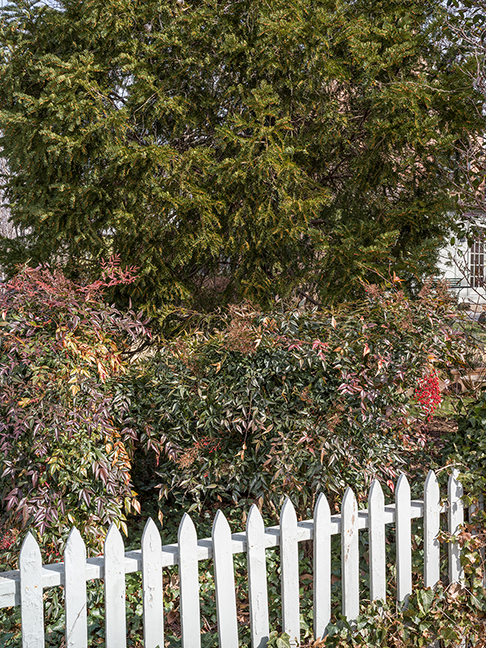


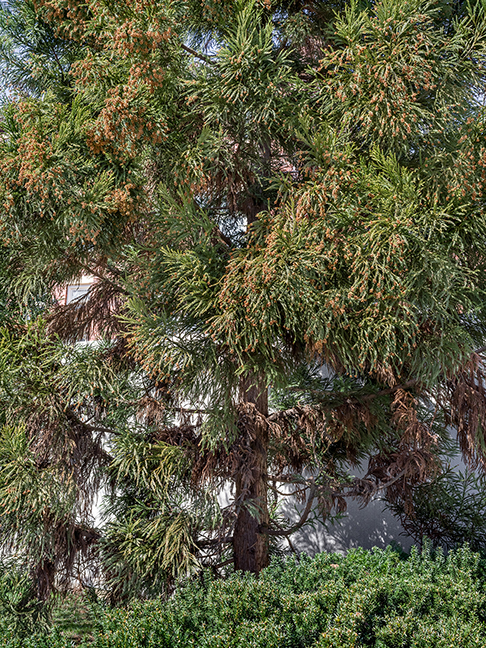


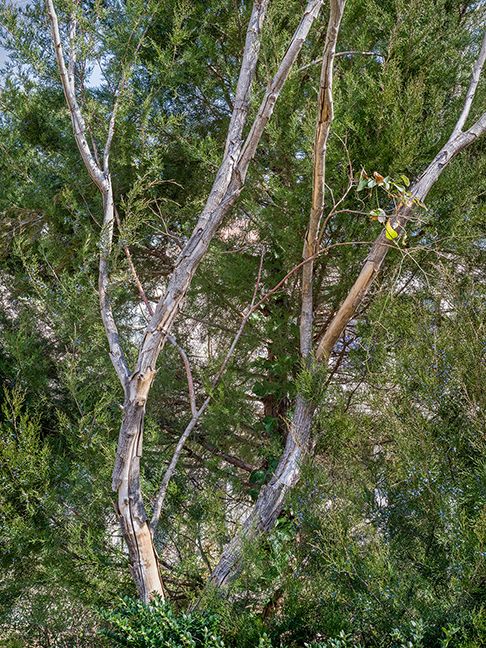


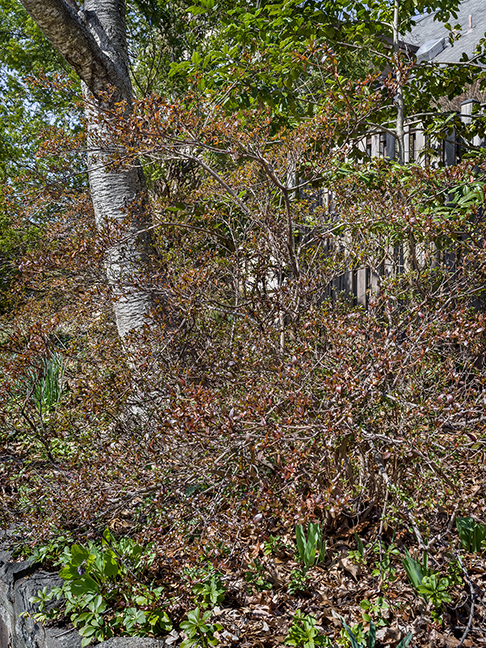


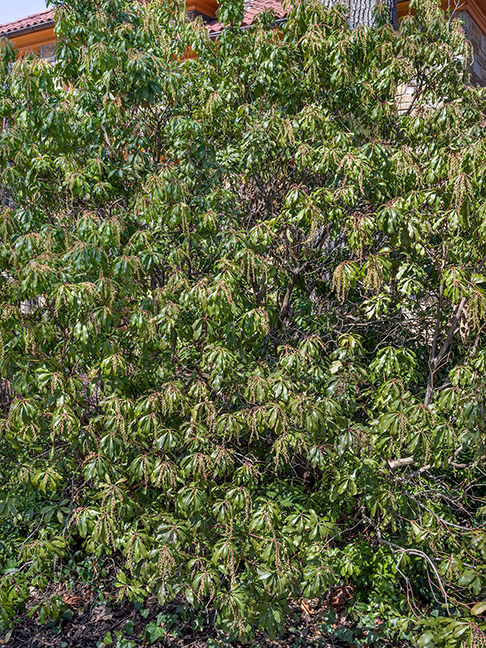


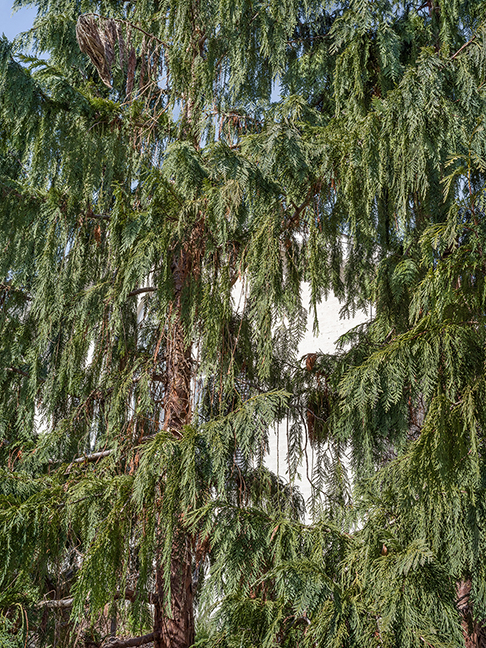


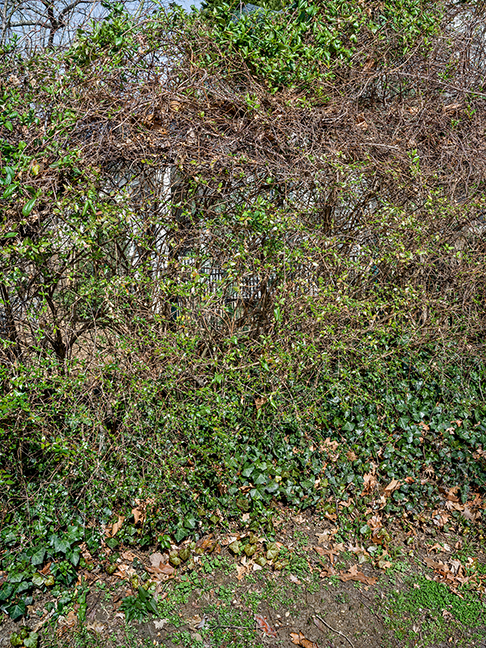


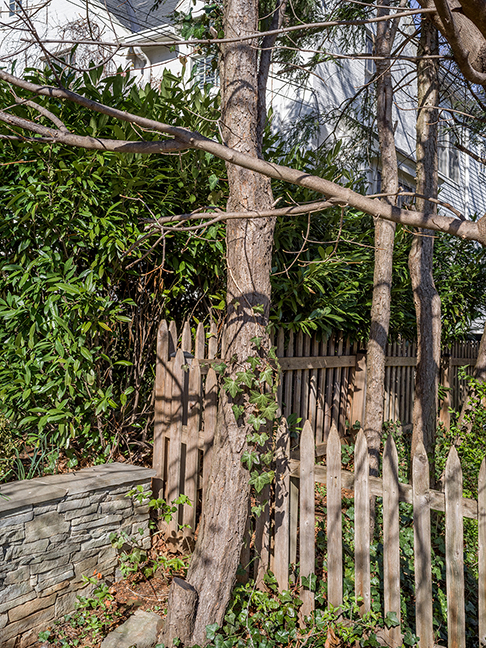


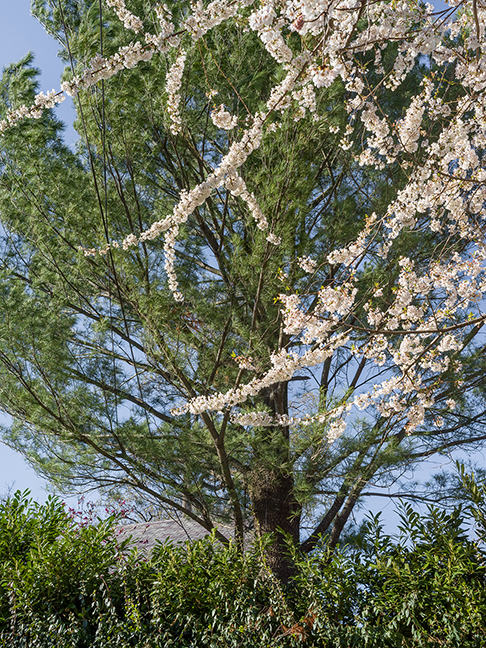


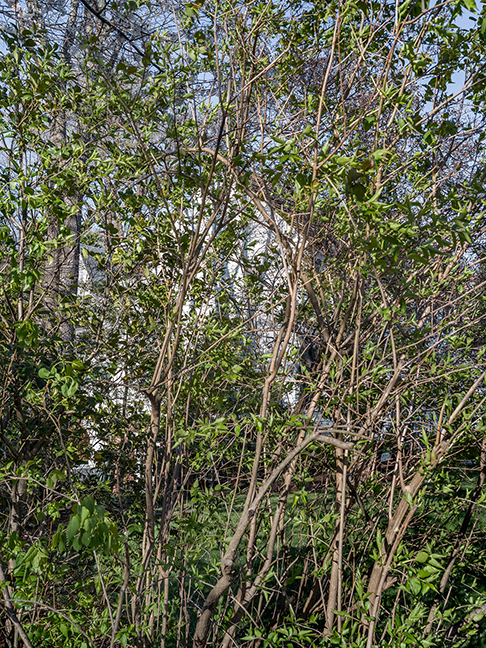


privacy plantings
The landscape has been a recurring subject in my practice for over thirty years. Privacy Plantings expands upon this oeuvre by focusing on a particular kind of landscape, or, more precisely, landscaping in several Northwest Washington, DC neighborhoods. A few years ago, I began photographing the trees and shrubbery that grow along the perimeter of yards, mostly single-family homes, but also condominium and apartment buildings. My intent is to make pictures that, at first glance, appear to be impenetrable tangles of foliage and branches, but upon closer inspection, viewers can see them for what they are, thin veils of vegetation that merely provide a semblance of seclusion and privacy.
These types of plantings provide greenery that undoubtedly makes the residents feel as if they are further removed from city life than what is truly the case, but I am especially interested in landscaping that simultaneously functions like walls, even if they are much less ridged than those constructed with bricks and mortar. These living walls seem to be equally intended to restrict people from looking in as giving those on the interior something beautiful to see from their vantage points. Thus, there is an obvious socio-economic aspect to this work because not everyone can afford to live and raise their children in homes that provide this level of privacy or natural beauty. In this regard, the project speaks to the privilege of the mostly white, upper-class residents of these neighborhoods, which includes me and my family.
There are certainly more affluent parts of the city where this type of landscaping is just one of many barriers that provide privacy and security, such as high gates, fences, and actual walls under constant surveillance; yet these partial screens captured in my photographs are better than no cover at all. By purposefully making photographs in locations where the residents have more control over how exposed they want their lives to be, I am trying to approach this subject in a way that avoids exploiting the lack of privacy of those who live in parts of the city with less greenery, and thus, not subjecting them to photography’s voyeuristic and, quite often, unsympathetic gaze. These are photographs of the yards of those who live in the Northwest quadrant of Washington, DC, that is, pictures made in my backyard.